
Responder’s Major Raises

Though the basics remain the same, showing support for a major as Responder has recently undergone some significant changes, for two main reasons: the emergence of 2-over-1 in a new suit becoming forcing to game, which overrides the old response of a game-forcing 2NT, with more appropriate continuations; and mixed raises being in fashion.
Here, I suggest a system that works well and is easy to memorise, by insisting on some differences from the old system. In the majority of sequences, the continuations are almost identical over a 1♥ or 1♠ opening. The differences are pointed out.
1- Showing support naturally
a) At the 2-level: constructive

Three-card support with 8-10 total points (including distribution: henceforth “points”), or four-card support with 6-8 points. Examples:
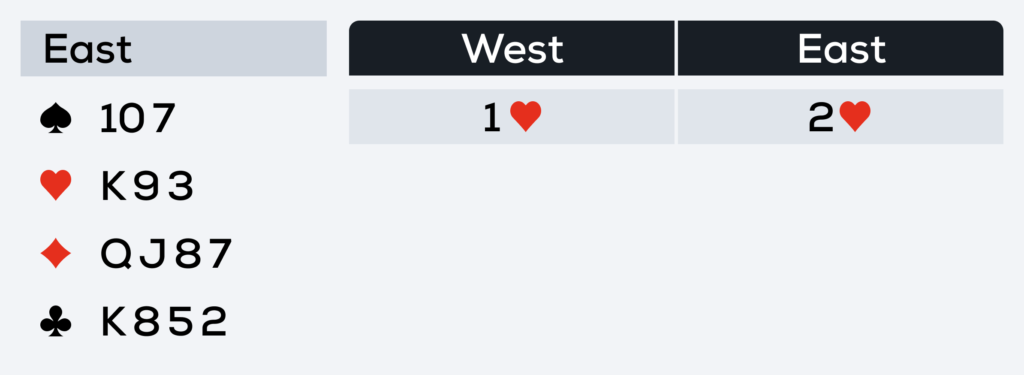
Classical.
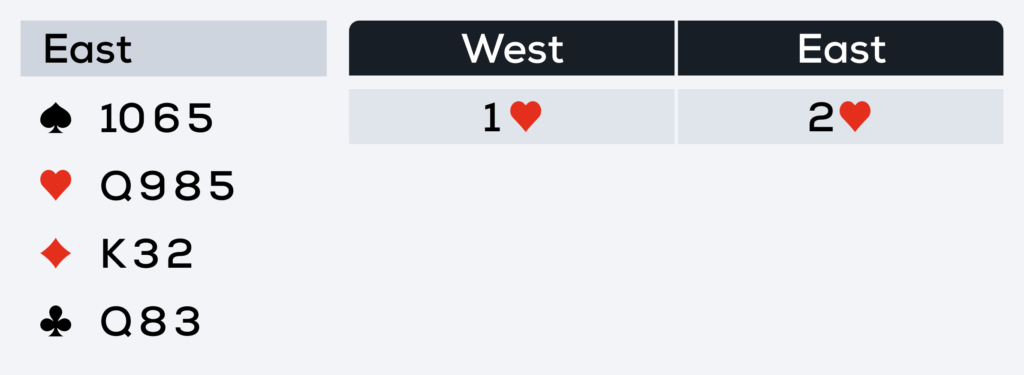
Four trumps but your distribution is too balanced to raise the bidding to the 3-level.
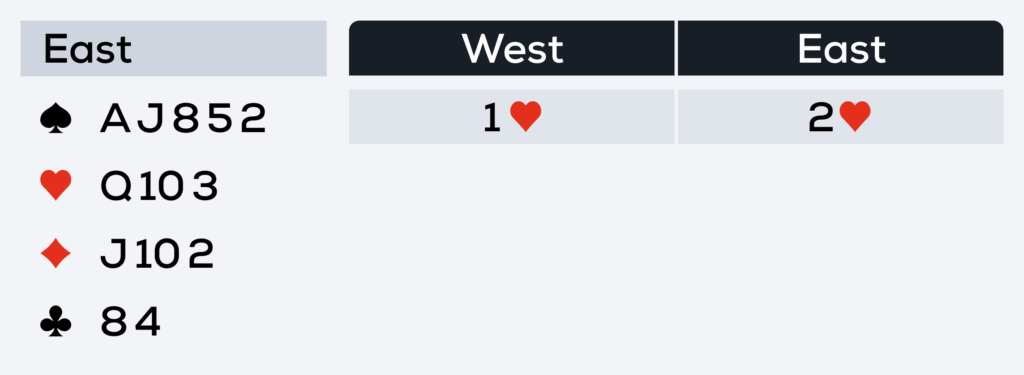
Priority goes to showing support in the 8-10-point range.
Note
With weaker hands, it is advised to disguise your support by responding 1♠ or 1NT over 1♥, 1NT over 1♠.
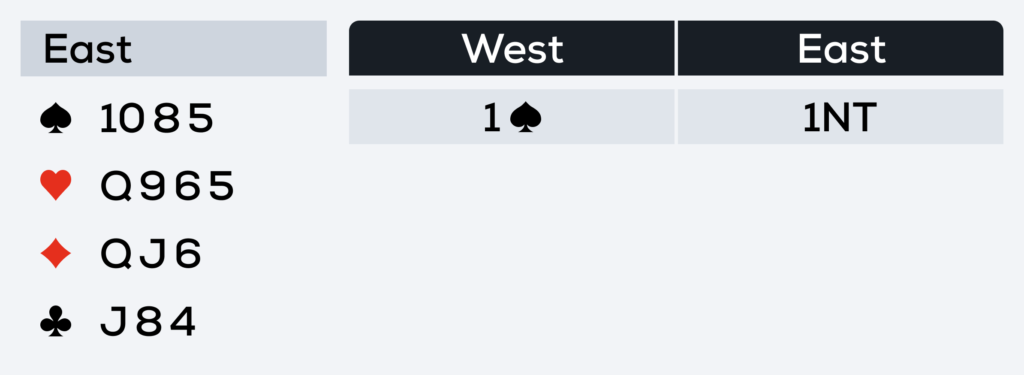
If Opener passes, it is not the end of the world. If he rebids 2♣, we will show preference for Spades (2♠), as with two cards: less encouraging than a direct raise.
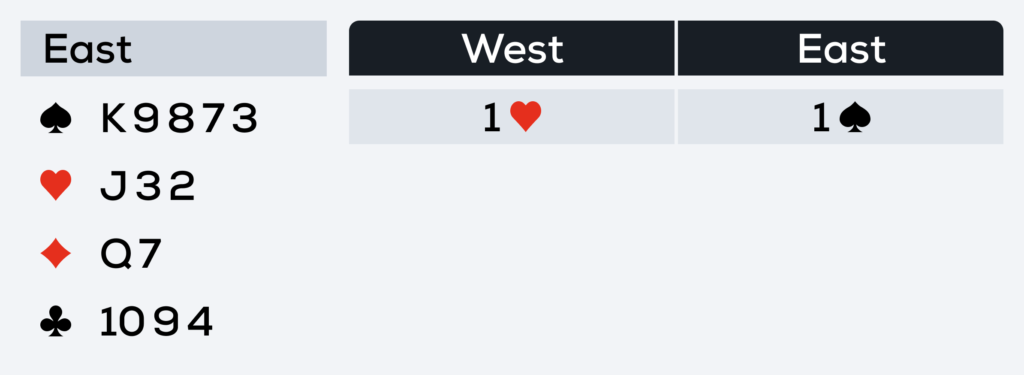
Over a 1NT rebid, a 2♥ bid will show precisely a hand too weak to have supported to 2♥ straightaway, with four or five cards in Spades. Over a 2♣ or 2♦ rebid, a 2♥ preference bid discourages an opener with 14-15 HCP and 5-4-3-1 distribution from making a game try.
b) At the 3-level: mixed raise

8-10 points with four trumps.
This is no longer a way of showing encouraging support with 11-12 points and four trumps; it is not a pre-empt (an opportunity to rid yourself of this bad habit!); it is a good 2♠ bid with four trumps, in the 8-10-point range. Example:
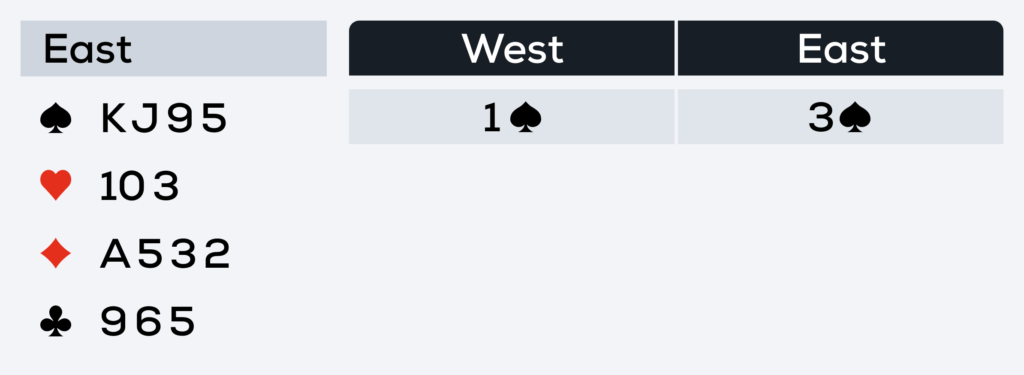
Several advantages: safety in distribution, limited risk of going down, helps Partner to bid a game if he is worried about the quality of the major he opened, more effectively obstructs overcalls and balances than a pre-empt with a very weak hand (the opponents have better hands).
Note
The hand above is evaluated at 10 points (HCP + distribution). The safest method of counting your points when supporting is to add your HCP to the difference between the number of trumps in your hand and your shortest suit. Four trumps and a doubleton, +2; four trumps and a singleton, +3, etc. Never add an extra point for a fourth trump that you have shown (or a fifth trump that you have shown). Here, you have 8 HCP + 2 = 10 points.
c) At the 4-level: pre-empt
You need a Funbridge Premium or Premium+ subscription to keep reading.
To read the rest of the article, you must be subscribed to the Premium or Premium+ offer.




I think it’s a very good one.
Does this recommended 2NT response to a 1NT open replace Jacoby 2NT or is this still a Jacoby 2NT response with the related possible opener rebids?